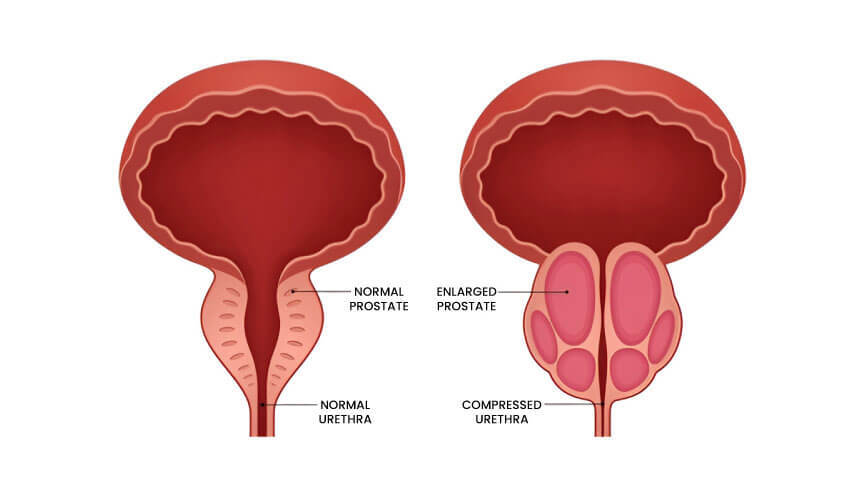
Prostate surgery, such as a prostatectomy, can save lives—but it often brings unexpected changes, including erectile dysfunction (ED). This condition affects many men after surgery and can feel frustrating or even embarrassing. But you are not alone—and there are real ways to regain confidence, comfort, and intimacy.
In this guide, we’ll walk you through why prostate surgery may affect erections, how to manage it, and what options—like therapy, tools, and treatments—can help you move forward with hope.
Why Prostate Surgery Can Cause Erectile Dysfunction
The prostate gland sits near important nerves and blood vessels that control erections. During prostate cancer surgery, even careful nerve-sparing techniques may still affect these areas.
Common Causes of ED After Surgery:
- Nerve damage near the prostate
- Blood flow disruption
- Muscle or tissue changes in the pelvic region
- Psychological stress from surgery or cancer recovery
Some men notice reduced firmness, delayed erections, or no erections at all after surgery. Recovery time can vary—from a few months to a couple of years.
What to Expect: The Recovery Process
Healing Takes Time
ED after prostate surgery is common and often temporary. Some men begin to recover erections within 6–12 months, while others may take longer. Age, overall health, and whether nerves were preserved all affect recovery.
Penile Rehabilitation Can Help
Doctors often recommend penile rehabilitation to improve blood flow and prevent long-term changes. This can include:
- Oral medications (like Viagra or Cialis)
- Vacuum erection devices (VEDs)
- Penile injections
- Pelvic floor exercises
- Sex therapy or counseling
Real-Life Tools That Support Recovery
Modern tools and techniques make recovery easier and more effective.
Vacuum Devices (Penis Pumps)
These non-invasive devices draw blood into the penis, creating an erection. They're often used early in the recovery process.
Penis Rings or Constriction Bands
These are placed at the base of the penis to keep blood in after using a pump. They help maintain erections during intimacy.
Lubricants and Foreplay Aids
Lubricants help reduce friction and improve comfort. Sensual aids—such as massagers or warming oils—can make arousal easier and more enjoyable.
Explore Heating Pads for Foreplay
Gentle heat can relax pelvic muscles and increase blood flow. Use of heating pads to ease chronic pain foreplay is helpful when tension or post-surgical soreness is present.
The Role of Communication and Emotional Support
Erectile dysfunction can affect more than the body—it can challenge your confidence and connection. Talking with your partner about your feelings, fears, and hopes can ease emotional strain.
Tips for Honest Communication:
- Use simple “I feel” statements (e.g., “I feel nervous about trying again”)
- Choose a calm, private time to talk
- Focus on connection, not just performance
- Reframe intimacy as more than intercourse—it includes touch, closeness, and trust
Sex Therapy Options for Prostate Surgery–Related ED
Sex therapists are trained to help men and couples adjust to changes after surgery. If you're dealing with frustration, loss of desire, or relationship tension, therapy can help you:
- Rebuild sexual confidence
- Explore new ways of experiencing pleasure
- Understand how to navigate emotional ups and downs
- Learn body-based mindfulness and relaxation skills

Is Surgery an Option?
For some men, penile implants offer a long-term solution when other treatments don’t work. These devices are placed inside the penis during a short surgery and allow for controlled erections. They are safe, effective, and often life-changing for those who need them.
Final Thoughts: You’re Not Alone—And You Have Options
Erectile dysfunction after prostate surgery is common—but it’s not the end of intimacy. With time, tools, support, and care, you can still experience satisfying closeness and connection.
You deserve to feel confident and cared for in every part of your life—including your sex life.
Explore Comfort-Focused Intimacy Tools at DOXXES
At DOXXES, we understand that sexual wellness after prostate surgery looks different—but that doesn’t mean it’s over. Our thoughtfully designed products support pleasure, connection, and confidence for every body.
- Gentle foreplay tools like massage wands and heating pads
- Lubricants and moisturizers for sensitive skin
- Erection support devices for post-surgical needs
- Discreet packaging and kind, respectful service
Visit DOXXES to find tools that meet your body where it is—today, and every day.
Because your comfort matters.
Your pleasure matters.
And DOXXES is here to help.
FAQs
- How long does ED last after prostate surgery? Recovery varies. Some men regain function within 6–12 months, others may take longer.
- Can ED after prostate surgery be treated? Yes. Medications, pumps, therapy, and even surgery are effective options.
- Is it normal to feel emotional about ED? Absolutely. Emotional support and communication are key parts of healing.
- What are penile implants? They are medical devices placed inside the penis that allow controlled erections and are often used when other treatments don’t help.
- Should I see a sex therapist? Yes, if ED affects your confidence or relationships, therapy can help guide you through recovery.
